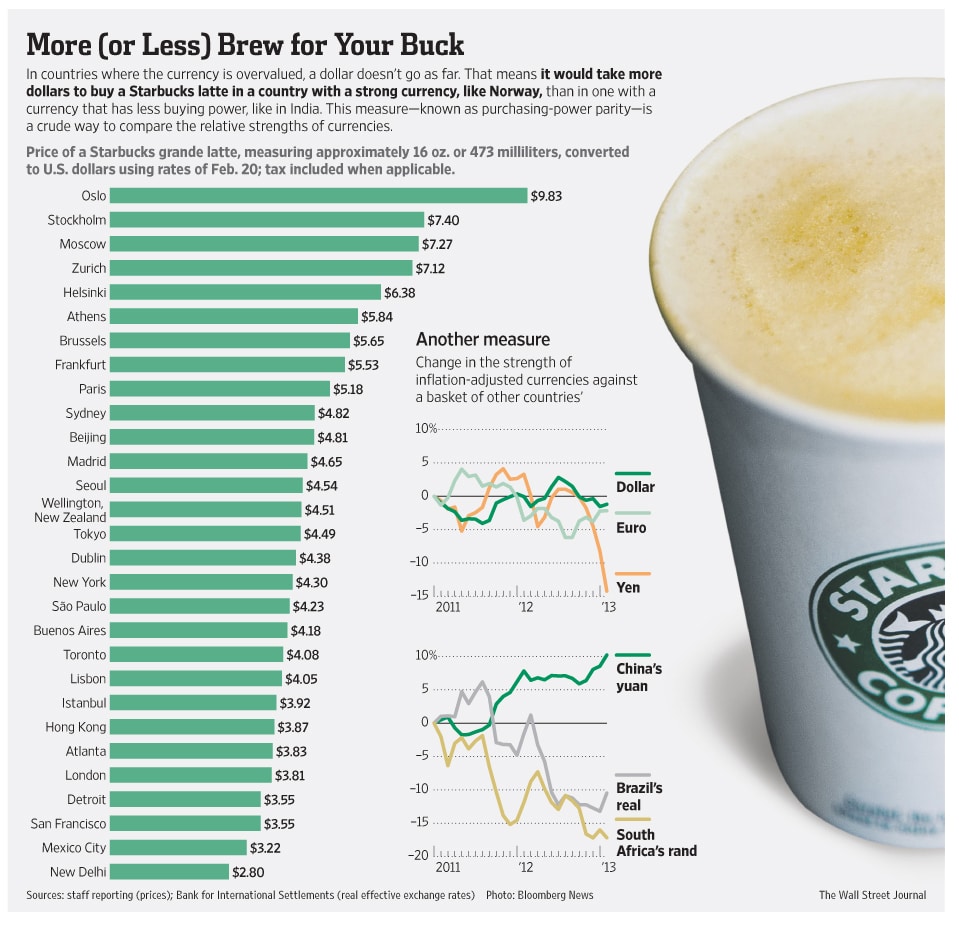When I quickly ran into Starbucks yesterday to get a tall Caramel Macchiato between appointments, I started thinking about how much money I could save if I didn’t pay $3.80 for each one of those addictive coffee drinks. However, if you love Starbucks, you know that “making it at home” just isn’t the same, and it’s barely an acceptable second choice. How much do other people in the world pay for a Starbucks coffee? This chart explains the strength of currencies with a Starbucks Grande Latte.
About a year ago, I wrote an article about the Current Global Economy Explained With A Big Mac. This year, it’s the strength of currencies explained with a latte. Although it may sound silly, it’s actually a really straightforward way to understand who pays what and where. For example, a Starbucks Grande Latte will cost me $3.83 here in Atlanta, but the exact same coffee will cost $9.83 in Oslo.
According to the WSJ, which is where this was originally posted, “It would take more dollars to buy a Starbucks Grande Latte in a country with a strong currency, like Norway, than in one with a currency that has less buying power, like in India. This measure – known as purchasing power parity – is a crude way to compare the relative strengths of currencies.”
I never knew so much information could be derived from the price of a simple latte. How much does a latte cost where you live? Is it worth it? There may be some variables that this chart doesn’t take into consideration. For example, in Helsinki there is only one Starbucks, and it’s in the airport. Things are always more expensive in the airport. There are probably other things that affect these costs too. I guess I shouldn’t complain about the price of Starbucks coffee here in Atlanta, after all, we’re pretty low on this list.
Strength Of Currencies Explained With Starbucks Grande Latte
(Click Chart To Enlarge)
Via: [Design Taxi]

COMMENTS